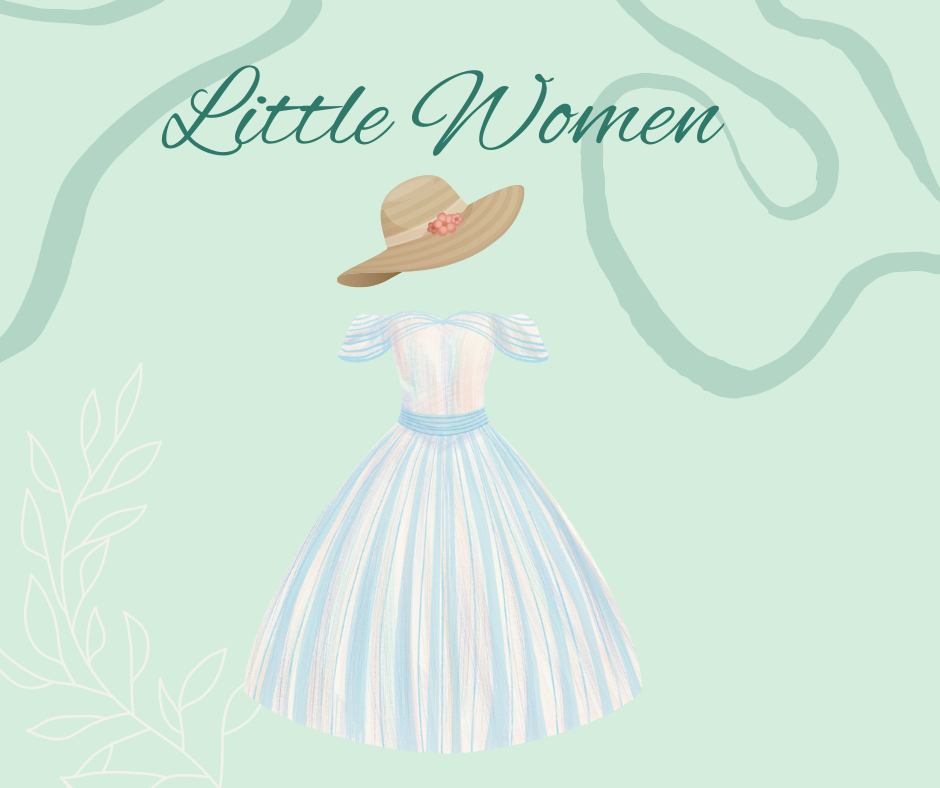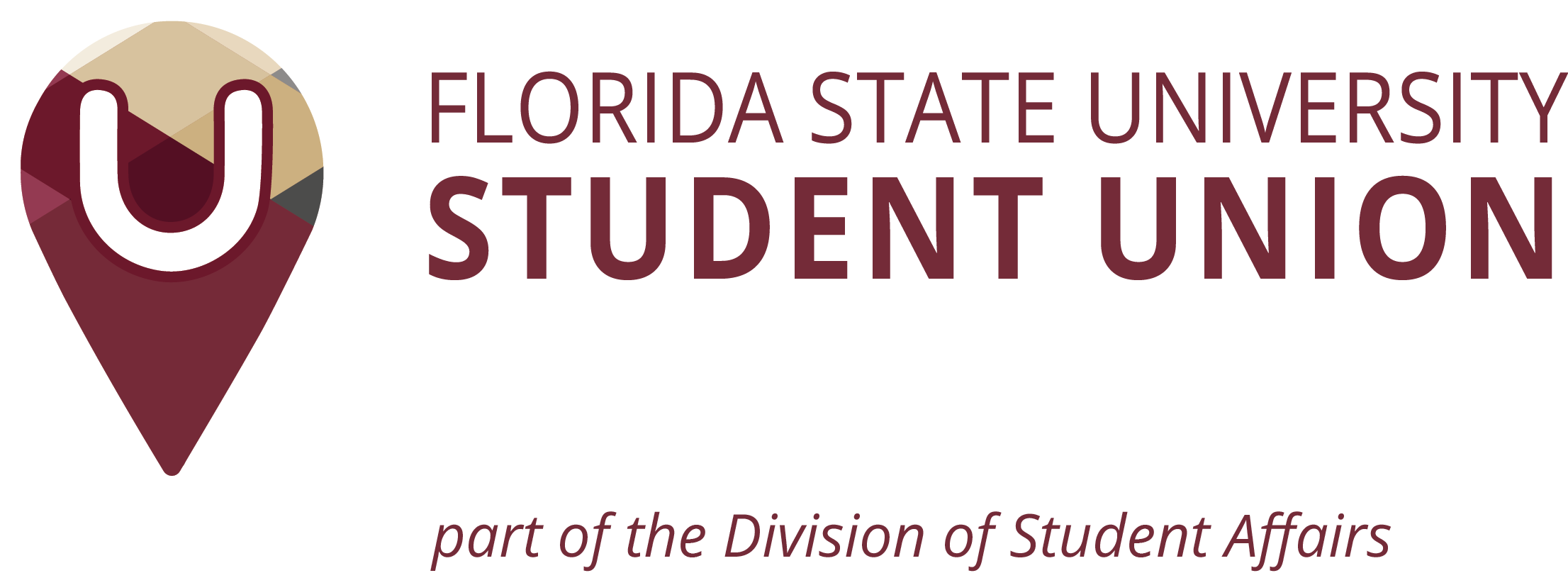Please visit response.fsu.edu for official FSU updates and resources.
She Did That! A Brief History of Women in Literature
 Did you know that Florida State University was at one time a women's college? While it had existed for years before in many different forms, the university would become known as the Florida State College for Women in 1909, when “the Buckman Act reorganized Florida's six colleges into three institutions segregated by gender and race” in 1905. By the year 1933, “the Florida State College for Women was the third-largest women's college in the U.S.”* It wouldn't be until 1947 that the school would become known as Florida State University and return to a co-educational university, largely due to the influx of returning soldiers looking to take advantage of the G.I. Bill.
Did you know that Florida State University was at one time a women's college? While it had existed for years before in many different forms, the university would become known as the Florida State College for Women in 1909, when “the Buckman Act reorganized Florida's six colleges into three institutions segregated by gender and race” in 1905. By the year 1933, “the Florida State College for Women was the third-largest women's college in the U.S.”* It wouldn't be until 1947 that the school would become known as Florida State University and return to a co-educational university, largely due to the influx of returning soldiers looking to take advantage of the G.I. Bill.
Some notable female alumni from Florida State include actress Faye Dunaway, marine biologist Sylvia Earle who was “the first female chief scientist of the U.S. National Oceanic and Atmospheric Administration,”** Virginia Montes, the civil rights activist and feminist who was “the first Latina to become a national officer of the National Organization for Women,”*** and Nancy Kulp, an actress and comedian who actually graduated from FSU in 1943 with a bachelor's degree in journalism, when it was still the Florida State College for Women. Though in relation to the SLC and WSU’s upcoming screening of Little Women (2019) at 7pm on March 28th, I would like to focus in on female writers specifically, and FSU has had a plethora of those as well. Notable female writers from FSU include biographer Virginia Spencer Carr, Jean Lorrah, a fantasy and sci-fi author, and Irita Bradford Van Doren, who also graduated from the Florida State College for Women. These women have had long and storied careers with their own successes and influences on the world of writing, but it was no doubt an uphill battle for them, as it has been for women in the literary field throughout history.
Louisa May Alcott wrote her famous novel, Little Women, in 1868 and based the aspiring author character, Jo March, largely on herself because she too had dreams of being an author, but for women, it was very different to break into literature at the time as it was a male dominated field. Women's literary work didn't receive much recognition because in the “early eighteenth century, women who wished to write full-time were seen as demeaning their own femininity and so female authors of the time used to publish anonymously,” “or [work] as commissioned no trade publishers.”**** Women authors who wanted to publish their work often had to opt for a male pen name to gain better recognition or opportunities. The Brontë sisters did this when Emily Brontë published her novel Wuthering Heights - now widely considered a masterpiece of English literature - under the name Ellis Bell.*****
At the time, education was a privilege not always afforded to women, so they had that hurdle to jump over as well. It was most commonly upper class or the wealthier women who received any education in the subject, if they did at all. Not to mention, if it was known that a writer was female, they then had a lot of restrictions and expectations on what they could write in terms of content or genre. The two notable genres they weren't supposed to write in were science fiction and horror. While these genres have largely been considered male dominated, once you dig deeper, you can find that there has actually been more women writing in these genres than you would think; they may have been overshadowed by the men or more purposefully dropped or erased from the historic narrative. In fact, it was Mary Shelley who created the science fiction genre with her novel Frankenstein that she wrote in 1817, when she was a teenager. Originally challenged to write a ghost story as a fun writing game with her husband and Lord Byron, she went about writing what she called, “a story to rival those which had excited me to this task. One which would speak to the mysterious fears of our nature, and awaken thrilling horror – one to make the reader dread to look around, to curdle the blood, and quicken the beating of the heart.” And thus, Frankenstein was written, and the first edition published anonymously.******
The visibility and volume of female writers increased some in the early 19th century with the industrial revolution and printing press which made printing easier and cheaper, and therefore made reading and education more accessible. In the late 19th century, women would start earning recognition for their works and perhaps start to get their seat at the table alongside their male contemporaries more than ever before, even if there was still a lot of gatekeeping. In genres like science fiction, however, women were still not always taken as seriously as their male peers, which would still be widely considered a boys’ club and male associated for a long time, even though there were some women writing it. As writers, women were largely confined to the genres of children's literature and poetry in the beginning of the 19th century.******* Women authors would, however, include a lot of social commentary into some of their work, using their writing as a way to explore and talk about the things they experienced or struggled with from their own perspective, like the role of women in society, women's suffrage and the sexism they faced, class struggles, what scared them, mental illness, etc.
Another big shift would take place in the 1970s with the second wave feminist movement, when there was a renewed interest in carving out a space for women in the field and acknowledging their contributions to literature. Schools started offering classes on the subject and there was a lot of research done at the time by women to uncover and bring to light various literary works that may have been forgotten or previously cast aside, as well as highlight the gender disparity when it came to who was being awarded the prizes.
In honor of Louisa May Alcott’s Little Women and Women's History Month, let’s celebrate the female authors of today, but also those of yesterday who boldly blazed the trail for women to make their place in literature. These women refused to give up and fought against the constraints of their time, gender, or race to get their voices heard. They dared to chase their dreams against the odds to do that!!
To celebrate Women's History Month, the SLC will be playing Little Women (2019) in partnership with the Women's Student Union (WSU). The Women's Student Union is a branch of the Student Government Association that focuses on “uniting women on the common purpose of individual self-growth by trying to foster the growth of women personally, professionally and politically. The WSU will celebrate the power existing within every woman to promote self-autonomy, denounce all limitations, educate on systems of oppression and advocate inclusivity within a diverse community. WSU facilitates a network among organizations, departments, and services to embrace, engage and empower.” (https://sga.fsu.edu/wsu.shtml) Little Women will play at the ASLC on March 28th at 7 PM.
* = “May 15, 1947 - Florida State College for Women Goes Co-Ed, Renamed FSU,” Florida History Network - Your one-stop source for celebrating and preserving Florida's past, today (Florida History Network ), accessed March 10, 2022, http://www.floridahistorynetwork.com/may-15-1947---florida-state-college-for-women-goes-co-ed-renamed-fsu.html.
** = “Sylvia Earle,” February 28, 2022. https://en.wikipedia.org/wiki/Sylvia_Earle.
*** = “Ginny Montes ,” February 27, 2022. https://en.wikipedia.org/wiki/Ginny_Montes.
**** = “The Historic Journey of Female Authors and Publishing Industry,” Austin Macauley Publishers (Austin Macauley Publishers, February 25, 2019), https://www.austinmacauley.com/blog/historic-journey-female-authors-and-publishing-industry.
***** = “The Historic Journey of Female Authors and Publishing Industry,” Austin Macauley Publishers (Austin Macauley Publishers, February 25, 2019), https://www.austinmacauley.com/blog/historic-journey-female-authors-and-publishing-industry.
****** = David Barnett, “Women in Science Fiction: 200 Years after Mary Shelley, Whither the Brides of Frankenstein?,” The Independent (Independent Digital News and Media, January 26, 2018), https://www.independent.co.uk/news/long_reads/women-science-fiction-authors-mary-shelley-frankenstein-200-ursula-k-le-guin-sci-fi-writers-female-a8177556.html.
******* = "Women's Literature in the 19th Century: Introduction ." Feminism in Literature: A Gale Critical Companion. . Encyclopedia.com. (February 28, 2022). https://www.encyclopedia.com/social-sciences/encyclopedias-almanacs-transcripts-and-maps/womens-literature-19th-century-introduction
Important books and female authors to check out
Mary Shelley: Frankenstein, The Last Man
Shirley Jackson: The Haunting of Hill House, We Have Always Lived in This Castle, The Lottery and Other Stories
Toni Morrison: Beloved, Jazz, The Bluest Eye (content warning for possibly triggering themes)
Margaret Atwood: The Handmaid's Tale (content warning for triggering themes), Bluebeard’s Egg and Other Stories, Alias Grace
Mary Wollstonecraft: A Vindication of the Rights of Woman
Patricia Highsmith: The Price of Salt (aka Carol), Strangers on a Train, Edith's Diary, The Talented Mr. Ripley
Maya Angelou: I Know Why the Caged Bird Sings (content warning for possibly triggering themes), Phenomenal Woman, Just Give Me a Cool Drink of Water 'Fore I Diiie, The Heart of a Woman
Alice Walker: The Color Purple (content warning for possibly triggering themes), Meridian, You Can't Keep a Good Woman Down, In Search of Our Mother's Gardens
Important scholarship on female authors
Weird Women: Classic Supernatural Fiction by Groundbreaking Female Writers: 1852-1923 by Lisa Morton and Leslie S. Klinger.
How To Suppress Women’s Writing by Joanna Russ
The Madwoman In The Attic: The Woman Writer and The Nineteenth-Century Literary Imagination by Sandra Gilbert and Susan Gubar
Well-Read Black Girl: Finding Our Stories, Discovering Ourselves edited by Glory Edim
Other sources I used to help inform my research
AUTHOR: GEEK'S GUIDE TO THE GALAXY.GEEK'S GUIDE TO THE GALAXY. “The History of Women in Sci-Fi Isn't What You Think.” Wired. Conde Nast, February 2, 2019. https://www.wired.com/2019/02/geeks-guide-history-women-sci-fi/.
Johnston, Katie. Rep. The Barriers Faced by Female Writers. fountainheadpress.com, August 2019. https://fountainheadpress.com/wp-content/uploads/2019/08/johnston.pdf
Klinger, Leslie, and Lisa Morton. “Weird Women: The Forgotten Female Horror Writers of the 19th Century and Beyond.” CrimeReads. LITHUB, August 3, 2020. https://crimereads.com/weird-women-the-forgotten-female-horror-writers-of-the-19th-century-and-beyond/
Rivera, Adrienne. “The History and Importance of Women's Literature.” www.BOOKSTELLYOUWHY.com. Books Tell You Why, Inc, April 12, 2020. https://blog.bookstellyouwhy.com/the-history-and-importance-of-womens-literature
"Women Writers, Emergence ." Encyclopedia of Sex and Gender: Culture Society History. Encyclopedia.com. (February 28, 2022). https://www.encyclopedia.com/social-sciences/encyclopedias-almanacs-transcripts-and-maps/women-writers-emergence
Written by Victoria Weaver
Art by Solymar Estrella



